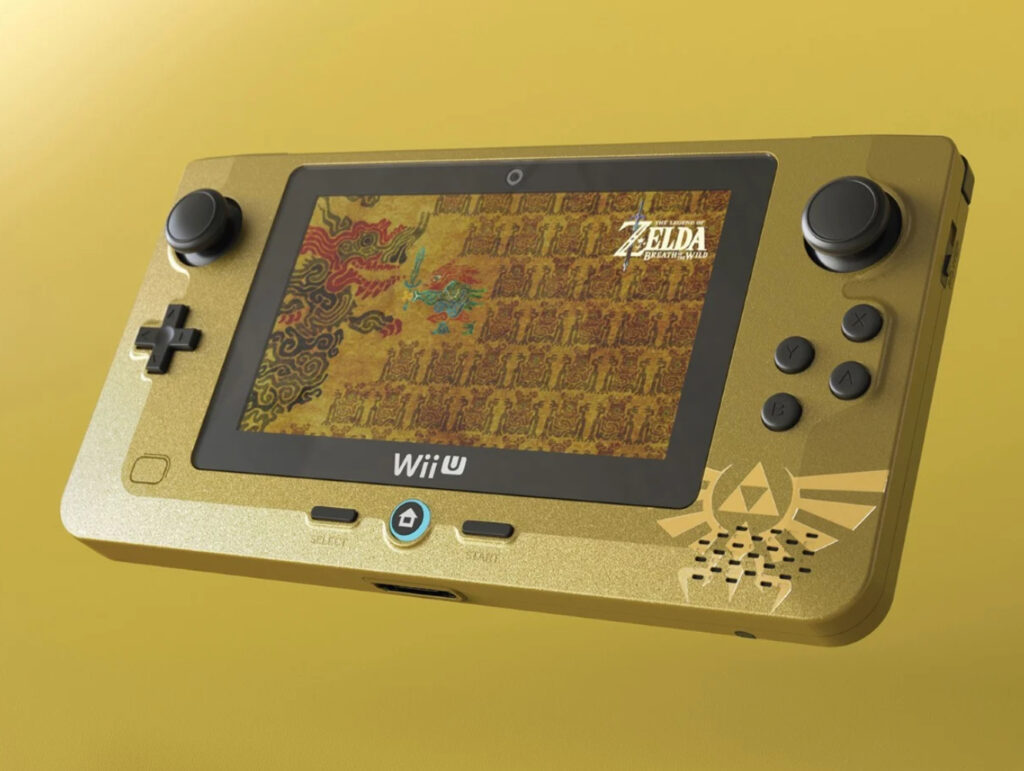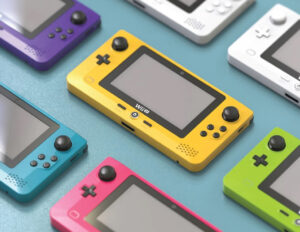In the long and twisty history of Nintendo hardware, few consoles have aged as oddly—or as unfairly—as the Wii U. Launched in 2012 to a confused market and tepid fanfare, it was largely eclipsed by its own successor, the wildly successful Nintendo Switch. Yet over a decade later, whispers of a revival are growing louder—not because of nostalgia alone, but because the timing, economics, and hardware ecosystem may finally be right.
The revival in question isn’t about resuscitating the entire Wii U console concept. Rather, it’s about reimagining its most ambitious component: the GamePad. And in 2025, when handheld-first gaming is exploding, Nintendo’s mobile design instincts and its maverick spirit might just make this move make perfect sense.
Let’s be clear—this isn’t a retro reboot. This is strategic hardware segmentation. And it might be exactly what Nintendo needs to keep its grip on multiple tiers of the gaming market as the Switch 2 looms on the horizon at a reported $449 MSRP. In contrast, a refreshed, GamePad-style Wii U handheld could offer affordability, identity, and cultural resonance—all without cannibalizing Nintendo’s flagship line.
WHY NOW? THE MARKET FOR HANDHELD DIVERSITY
We’re in a golden age of handheld hardware. Steam Deck, ASUS ROG Ally, Ayaneo, and the upcoming Switch successor have made it clear: players want mobility with power. But here’s the issue—most of these machines are priced like laptops. And while the Switch Lite filled the “budget hybrid” space admirably for a few years, it now feels outdated next to OLED screens, advanced haptics, and faster chipsets.
That’s where the Wii U revival concept enters the conversation—not as a Switch killer, but as a dedicated handheld for players who want Nintendo magic without the flagship cost. Designer Brenden Sullivan’s renders reveal a form factor that’s compact, ergonomic, and modern. This is not the bloated plastic tablet of 2012. This is the GamePad reborn—streamlined, untethered, and optimized for focused, screen-centric play.
In terms of form, think Switch Lite, but with sharper intention. The symmetrical analog sticks, actual D-pad (not split buttons), USB-C charging, and deeper grips suggest a machine made not to dazzle, but to perform—to play 2D platformers, indie gems, and retro classics without distraction or drift.
And unlike Steam Deck or the rumored Sony Q-Lite, this wouldn’t need to stream or emulate. It would run games natively, much like a refined version of the New 3DS XL or PS Vita, but with Switch-era sensibilities. That’s not just appealing—it’s strategic design differentiation.
NOSTALGIA AS DESIGN CURRENCY
It’s impossible to ignore the power of nostalgia in gaming hardware today. Just look at the Game Boy Micro’s cult resurgence, the GBA SP mods flooding social media, or the continued aftermarket value of the PS Vita. But there’s a fine line between capitalizing on memory and designing for the present. This Wii U concept gets that balance right.
Sullivan’s Zelda gold edition prototype, in particular, is a triumph of cultural memory. It echoes the 3DS XL Triforce design while radiating a modern glow. The color variants—muted pastels, rainbow shell plastics, transparent builds—nod to the Game Boy Color era while reinforcing the device’s accessibility and identity.
Where the original Wii U GamePad suffered from conceptual overreach (split-screen mirroring, off-TV play tethered to a base console), the revival ditches the anchor. No second screen gimmicks. No mandatory Wii U console. This new device would be self-contained, software-agnostic, and tailored to Nintendo’s expanding library of small-format games.
Which brings us to the most important factor of all: software compatibility.
THE LIBRARY IS ALREADY WAITING
Nintendo doesn’t need to build a new software pipeline for this device. The eShop is already overflowing with indies, classic ports, NES/SNES/Game Boy libraries, and lightweight third-party titles that run effortlessly on Switch’s existing architecture. A handheld Wii U revival could tap into this catalog with minimal adaptation.
More importantly, the device could serve as a legacy bridge—running Wii U and 3DS-era ports, even encouraging developers to revisit overlooked gems. Imagine Affordable Space Adventures, Tokyo Mirage Sessions, or NES Remix enjoying a second life on streamlined hardware with more intuitive UI and modern download support.
Nintendo has a track record of letting underdog hardware find cult success long after release (GameCube, Wii Mini, New 2DS XL). With the right OS skin, hardware identity, and price point, the Wii U handheld could finally fulfill the promise the original GamePad never could.
PRICE AS POWER
Let’s talk strategy. With the Switch 2 poised at $449, and many global regions facing component inflation and tariff increases, price point segmentation is critical. Nintendo needs something under $299—preferably closer to $199—that doesn’t feel like a “cheap Switch,” but rather its own compelling experience.
A new Wii U handheld could live in that niche. Positioned as the “focused gamer’s machine”—no detachable Joy-Cons, no docking, no hybrid gimmickry—it could become the ideal second console for dedicated fans, parents seeking a more rugged device for kids, or budget-conscious newcomers who want access to Nintendo’s digital catalog.
With Nintendo’s talent for efficient SOCs, their existing supply relationships, and decades of handheld innovation, this wouldn’t be a technical stretch. It would be a business refinement. Lean hardware. Optimized software. Minimal production waste. Maximum nostalgia.
A SENSE OF IDENTITY
What makes a handheld succeed isn’t just games or price. It’s identity. That’s what made the DS revolutionary, the 3DS endearing, and the Game Boy iconic. The revived Wii U GamePad, in this reimagined form, is not just a smaller screen or a budget compromise. It’s a device with personality—one that’s tactile, expressive, and emotionally resonant.
The era of sterile gaming slabs is fading. Players want devices that feel crafted, with clear intent behind each curve and color. The Sullivan concept understands that. It’s not just functionally sound—it’s visually inviting, culturally aware, and emotionally relevant.
The rainbow shell editions alone suggest a return to joy—the kind of playfulness Nintendo once reserved for hardware like the DS Lite or the GBA SP Tribal Edition. A return not just to form, but to character.
Thoughts
In 2012, the world wasn’t ready for the Wii U. The pitch was unclear. The marketing was muddled. And the hardware was tethered to legacy thinking. But in 2025, the conditions have shifted.
We now understand the value of dedicated handhelds. We’ve seen how multiple hardware tiers can coexist (see: Xbox Series S/X). And most importantly, we’ve watched as once-dismissed devices like the GameCube and PS Vita became cult classics, inspiring new generations of modders, players, and collectors.
A Wii U revival handheld wouldn’t replace the Switch. It wouldn’t outpace the Steam Deck. It would do something far more Nintendo: carve out its own lane, with focus, fun, and functionality at the center.
No comments yet.








